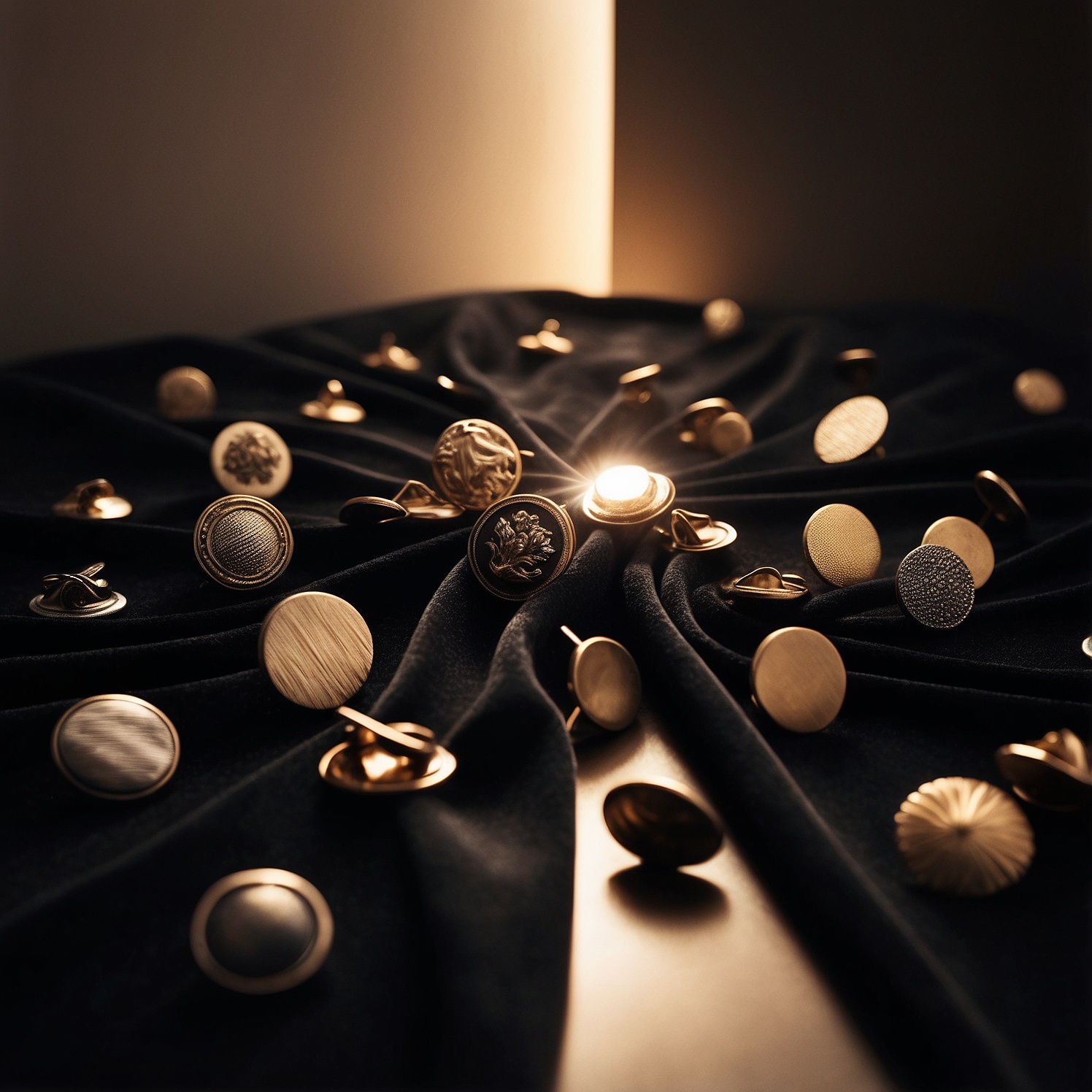For avid collectors, custom lapel pins are more than just decorative items—they are treasured symbols of history, achievement, and personal memories. Whether it’s a pin from a corporate event, a political campaign, a sports team, or a limited-edition collectible from a fan convention, each custom lapel pin carries its own story. But like all collectibles, the value of a pin can depend greatly on its condition. If a lapel pin is scratched, tarnished, or damaged, its sentimental and financial value may decrease.
Ensuring that your custom lapel pins retain their worth involves more than just placing them in a drawer or wearing them occasionally. Proper care, storage, and handling are essential to preserving their condition, especially if you plan to keep them as collectibles, trade them, or one day sell them for a profit.
This collector’s care guide will offer comprehensive tips and strategies to help you protect and maintain your lapel pins, ensuring they remain valuable for years to come. Whether you’re a seasoned collector or just starting your pin collection journey, these expert tips will help you take care of your custom lapel pins like a pro.
Understanding the Importance of Pin Preservation
Before diving into the care tips, it’s important to understand why maintaining the condition of your custom lapel pins is so crucial. Like any collectible, the value of a pin is often tied to its rarity, design, and historical significance. However, its condition is arguably the most important factor in determining its worth, both monetarily and sentimentally.
Here’s why pin preservation is so important:
1. Condition Directly Affects Value
When it comes to collectible pins, condition is everything. A pin that is well-preserved, with no visible damage or discoloration, will always fetch a higher value in the resale or trade market. Conversely, pins that are tarnished, scratched, or faded will lose much of their value. If you are collecting pins with the intent of reselling them or trading for high-value pins, keeping your pins in mint condition is essential.
Collectors and enthusiasts often grade pins based on factors such as color vibrancy, smooth enamel surfaces, and sharp detailing. A pin with scratches, missing enamel, or faded colors will be considered “lower grade” and, as a result, will be less valuable. Proper care helps ensure that your pins stay in the best condition possible, preserving their market value.
2. Emotional and Sentimental Value
Beyond financial worth, custom lapel pins often hold personal meaning for collectors. Whether it’s a pin commemorating a milestone event or a limited-edition pin you traded for at a fan convention, the sentimental value of a pin can make it irreplaceable. Keeping your pins in pristine condition ensures that they remain lasting symbols of the moments, memories, and experiences they represent.
For many collectors, the value of a pin is tied to its story. A pin that has been well-preserved not only maintains its physical beauty but also its ability to evoke the memories associated with it. Whether you received the pin at an important event or exchanged it with a fellow enthusiast, preserving the pin allows it to continue serving as a reminder of those cherished experiences.
3. Ensuring Longevity for Future Generations
Many collectors plan to pass down their pin collections to future generations. Whether you’re handing your collection to children, grandchildren, or fellow collectors, maintaining the integrity of your pins ensures they’ll be enjoyed for years to come. Proper care will allow your collection to maintain its beauty and significance, creating a legacy of lapel pin collecting that spans generations.
If you intend to leave your collection as a family heirloom, your pins’ longevity and condition will play a key role in their appreciation. Ensuring that your collection is well-preserved enhances the emotional impact of handing down these tokens of personal and historical significance.
Tip 1: Handle Your Custom Lapel Pins with Clean Hands
One of the simplest yet most important ways to care for your custom lapel pins is by handling them properly. Oils, dirt, and moisture from your hands can transfer onto the surface of your pins, leading to tarnishing or discoloration over time.
How to Properly Handle Pins:
- Always Wash Your Hands: Before touching your pins, make sure to wash your hands thoroughly with soap and water to remove oils, dirt, and residue. Even the smallest amount of oil can leave marks on the pin, particularly on metallic surfaces like gold or silver.
- Wear Cotton Gloves for Maximum Protection: For serious collectors, wearing cotton gloves when handling pins is the best way to avoid transferring oils or dirt onto the surface. Gloves offer added protection, especially if you are handling rare or delicate pins that are more prone to damage.
- Hold Pins by the Edges: When picking up or placing your custom lapel pins, hold them by the edges to minimize direct contact with the design or enamel. This reduces the risk of smudging or scratching the pin’s surface.
Proper handling is the foundation of lapel pin care, and maintaining good habits will go a long way in preserving the quality of your collection.
Tip 2: Store Your Custom Lapel Pins Properly
Proper storage is key to ensuring that your custom lapel pins remain in mint condition. The wrong storage environment can lead to fading, tarnishing, or damage to the enamel and metal finishes. Here are some best practices for storing your pins:
1. Use a Pin Display Case or Pin Board
One of the most effective ways to store and showcase your custom lapel pins is by using a pin display case or pin board. These options allow you to organize your pins neatly while protecting them from dust, dirt, and direct contact with other items.
- Pin Display Cases: A pin display case with a glass or plastic cover provides excellent protection while still allowing you to showcase your collection. The cover keeps dust and dirt away from the pins, preventing potential damage.
- Pin Boards: If you prefer a more accessible option, pin boards are a popular choice. They allow you to easily attach and remove your pins while organizing them in a visually appealing way. Pin boards can be framed and hung on the wall, making it easy to view and admire your collection.
2. Avoid Humidity and Direct Sunlight
Humidity and sunlight can be major enemies of custom lapel pins, especially those made from metals like brass, gold, or silver. Excessive moisture can cause metal pins to tarnish or corrode, while direct sunlight can lead to fading or discoloration of enamel or painted surfaces.
- Store in a Cool, Dry Place: To protect your pins from humidity, store them in a cool, dry place, away from damp areas like basements or bathrooms. Using silica gel packets in your storage area can help absorb excess moisture and keep the environment dry.
- Avoid Direct Sunlight: If you are displaying your pins in a room with windows, make sure they are not exposed to direct sunlight. Over time, UV rays can cause the colors of your pins to fade, diminishing their visual appeal and value.
3. Use Acid-Free Materials
If you’re storing pins in a case or box with fabric, foam, or paper backing, be sure to use acid-free materials. Standard materials can contain chemicals that may react with the metal, leading to tarnishing or corrosion over time. Acid-free materials are designed to prevent these reactions and provide a safe environment for your pins.
Using proper storage solutions not only protects your pins but also allows you to display and enjoy them as part of your collection.
Tip 3: Clean Your Pins Regularly and Carefully
Keeping your custom lapel pins clean is essential to maintaining their shine and preventing damage. However, not all cleaning methods are suitable for every type of pin. The material, finish, and design of your pin will determine the best cleaning approach.
How to Clean Your Custom Lapel Pins:
- For Enamel Pins:
- Use a Soft Cloth: Gently wipe the surface of enamel pins with a soft, lint-free cloth to remove dust and dirt. Avoid using harsh cleaning agents or abrasive materials that could scratch the enamel or dull the finish.
- Warm Water and Mild Soap: If necessary, you can clean enamel pins using a mixture of warm water and mild dish soap. Dampen a cloth with the soapy water, gently clean the pin, and then dry it thoroughly with a soft cloth to prevent moisture from settling in any crevices.
- For Metal Pins (Gold, Silver, Brass):
- Use a Jewelry Cleaning Cloth: Metal pins, especially those made from gold, silver, or brass, should be cleaned with a jewelry cleaning cloth to restore their shine. Jewelry cleaning cloths are designed to gently remove tarnish without scratching the metal.
- Avoid Chemical Cleaners: Avoid using strong chemical cleaners or polishes, as they may damage the pin’s surface or remove protective coatings. Instead, opt for a gentle, non-abrasive cleaning method.
- For Pins with Special Finishes (Glitter, Glow-in-the-Dark, or Metallic):
- Handle with Care: Pins with special finishes, such as glitter or glow-in-the-dark elements, require extra care when cleaning. Avoid submerging them in water or using cleaning solutions that could damage the delicate finish. Use a dry, soft cloth to gently wipe away any dust or debris.
Cleaning your pins regularly keeps them looking fresh and prevents the buildup of dirt and oils that could lead to long-term damage. Always clean your pins gently, using appropriate materials for the type of pin you are handling.
Tip 4: Rotate Your Displayed Pins
If you have a large collection of custom lapel pins, consider rotating the pins you display on a regular basis. While it’s tempting to showcase your entire collection at once, leaving pins on display for extended periods can expose them to dust, sunlight, and humidity, all of which can cause wear and tear over time.
Why Rotation Helps:
- Reduces Exposure: Rotating your pins ensures that no single pin is left exposed to environmental factors like light or moisture for too long. This reduces the risk of fading or tarnishing and helps maintain the pin’s overall condition.
- Highlight Different Pins: Rotation allows you to highlight different parts of your collection over time. You can showcase a new set of pins every few months, giving each part of your collection its moment in the spotlight without overexposing any individual pin.
- Gives Pins a Break: Taking pins off display periodically gives them a “break” from the elements and reduces the likelihood of any long-term damage from exposure.
If you have a dedicated pin board or display case, consider creating a rotation schedule where you swap out pins every few months. This practice will keep your collection looking fresh and ensure that your pins stay well-preserved.
Tip 5: Use Proper Attachments to Avoid Damage
One of the most common causes of damage to custom lapel pins is improper or loose attachments. If a pin falls off your clothing or display, it could become scratched, bent, or damaged. Ensuring that your pins are securely fastened is critical to protecting them from accidental damage.
Types of Pin Attachments:
- Butterfly Clutches: Most lapel pins come with butterfly clutches that secure the pin in place. While these are standard and effective, they can sometimes become loose over time. Be sure to check the tightness of the clutch periodically to avoid the pin slipping off.
- Locking Pin Backs: For more valuable or delicate pins, consider using locking pin backs. These backs are more secure than standard clutches and provide an extra layer of protection, ensuring that your pin stays firmly attached.
- Magnetic Backings: If you’re concerned about damaging your clothing or pin with traditional pin attachments, magnetic backings are a great alternative. They offer a secure hold without puncturing fabric, and they’re easy to attach and remove without damaging the pin’s post.
By using proper attachments, you can prevent accidental drops or losses, ensuring that your pins remain in excellent condition.
Tip 6: Protect Pins During Transport
Whether you’re attending a fan convention, a pin trading event, or simply traveling with your pins, protecting them during transport is critical to avoiding scratches, dents, or other damage. Transporting pins safely requires thoughtful preparation.
Best Practices for Transporting Pins:
- Use a Pin Case or Pin Bag: Invest in a dedicated pin case or bag designed specifically for pin collectors. These cases often have foam inserts or fabric panels where you can securely attach your pins, keeping them organized and protected during travel.
- Wrap Pins Individually: For more delicate or valuable pins, consider wrapping them individually in soft cloth or tissue paper before placing them in your case. This extra layer of protection helps prevent scratching or rubbing between pins.
- Avoid Overpacking: Overpacking pins in a single bag or case can lead to accidental damage. Ensure that there is enough space between each pin to avoid crowding and scratching.
By taking care during transport, you can ensure that your pins arrive at their destination in the same pristine condition they left in.
Tip 7: Document and Inventory Your Collection
For serious collectors, documenting and inventorying your pin collection is an essential part of the care process. Keeping an accurate record of your custom lapel pins helps you stay organized, track the value of your collection, and ensure that you can easily locate specific pins when needed.
Tips for Documenting Your Collection:
- Create a Digital Inventory: Use a spreadsheet or a dedicated collection management app to document each pin in your collection. Include details such as the pin’s design, year of acquisition, condition, and any sentimental or financial value it holds. Taking photos of each pin can also help you keep a visual record of your collection.
- Track Value and Provenance: If you’re collecting pins with the intention of trading or selling them, tracking the value and provenance of each pin is important. Record any details related to the rarity, origin, or limited-edition status of the pin, as well as its current market value.
- Regular Updates: As your collection grows, make sure to update your inventory regularly. Add new pins as you acquire them, and remove any pins you’ve traded or sold.
A well-documented collection not only helps you stay organized but also adds a layer of professionalism and care to your collecting practice.
Caring for Your Custom Lapel Pins Like a Pro
For collectors, custom lapel pins represent much more than decorative items—they are pieces of art, history, and personal memory. Whether you’re collecting pins for sentimental reasons or as valuable investments, taking proper care of your collection is essential to ensuring that your pins retain their worth and beauty.
From handling pins with care to storing them properly, cleaning them regularly, and rotating your display, following these best practices will help you preserve your pins for years to come. Whether you’re a casual collector or a seasoned enthusiast, protecting the condition of your pins ensures that they remain cherished and valuable keepsakes, ready to be admired, traded, or passed down to future generations.
By following the tips in this guide, you’ll not only protect your custom lapel pins from damage but also enhance the enjoyment and longevity of your collection. Treat your pins with the care and respect they deserve, and they will continue to bring you joy and value for years to come. If you are interested in some custom lapel pins, feel free to contact us at 1-855-471-6752 or fill out one of our FREE QUOTE FORMS.








